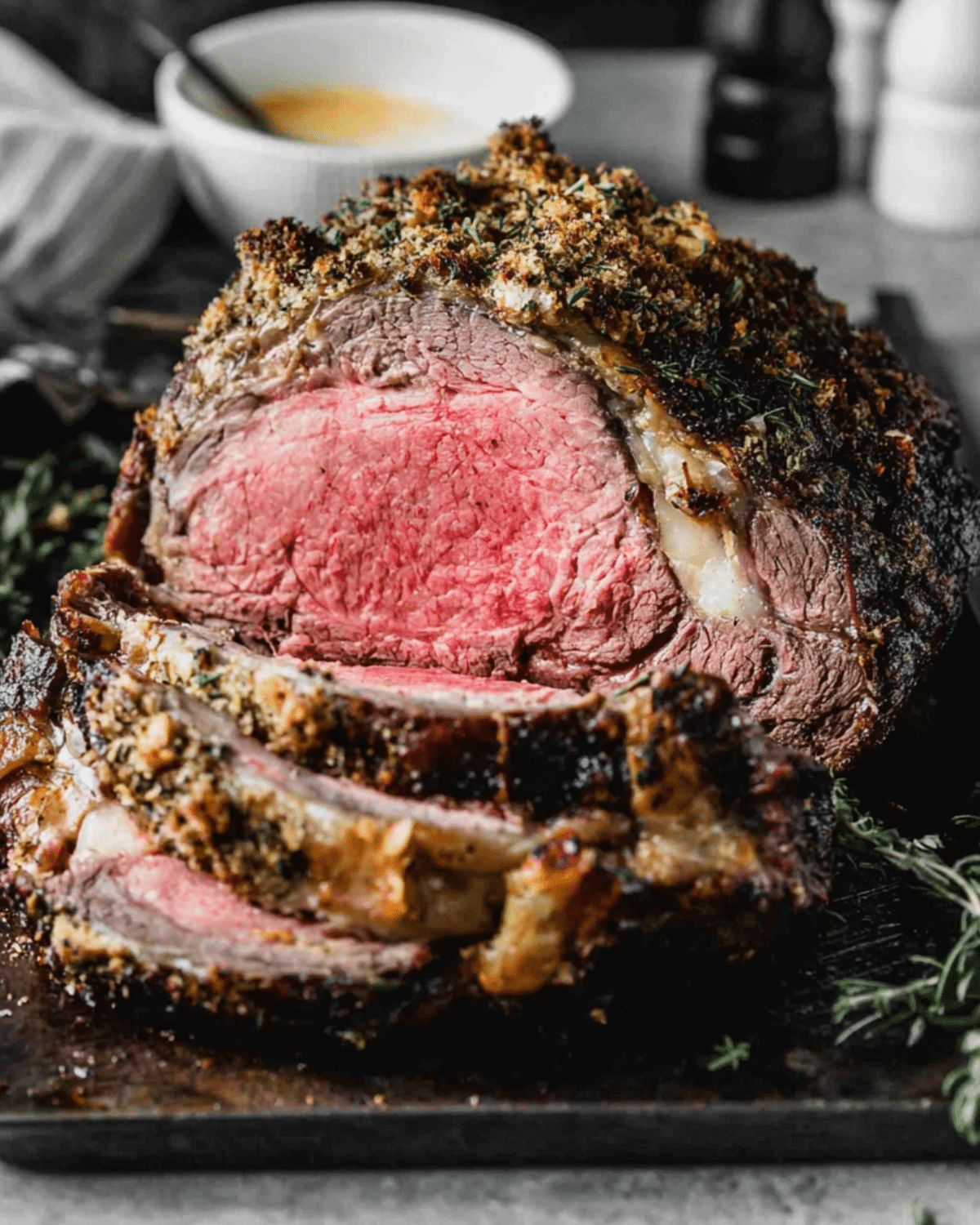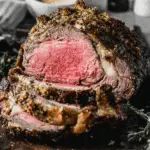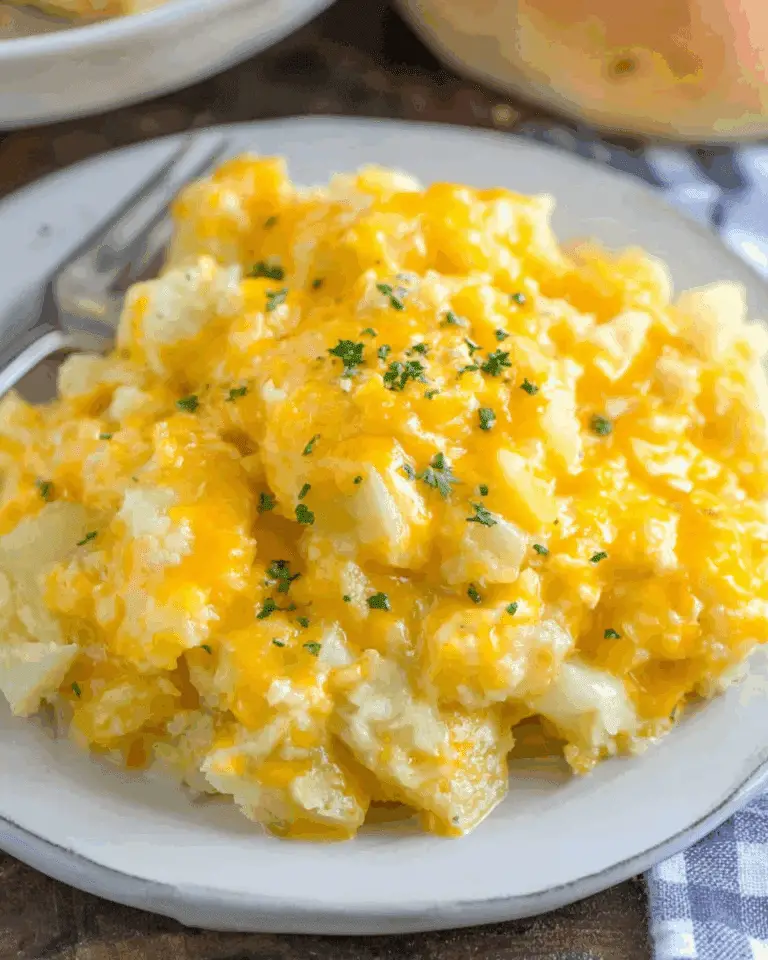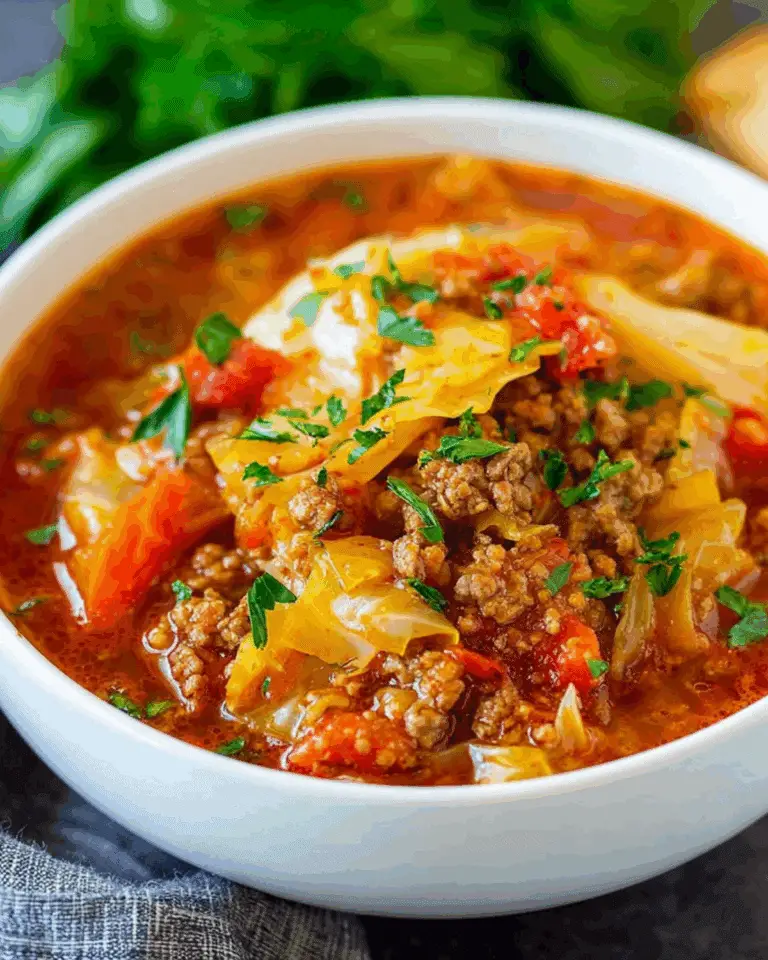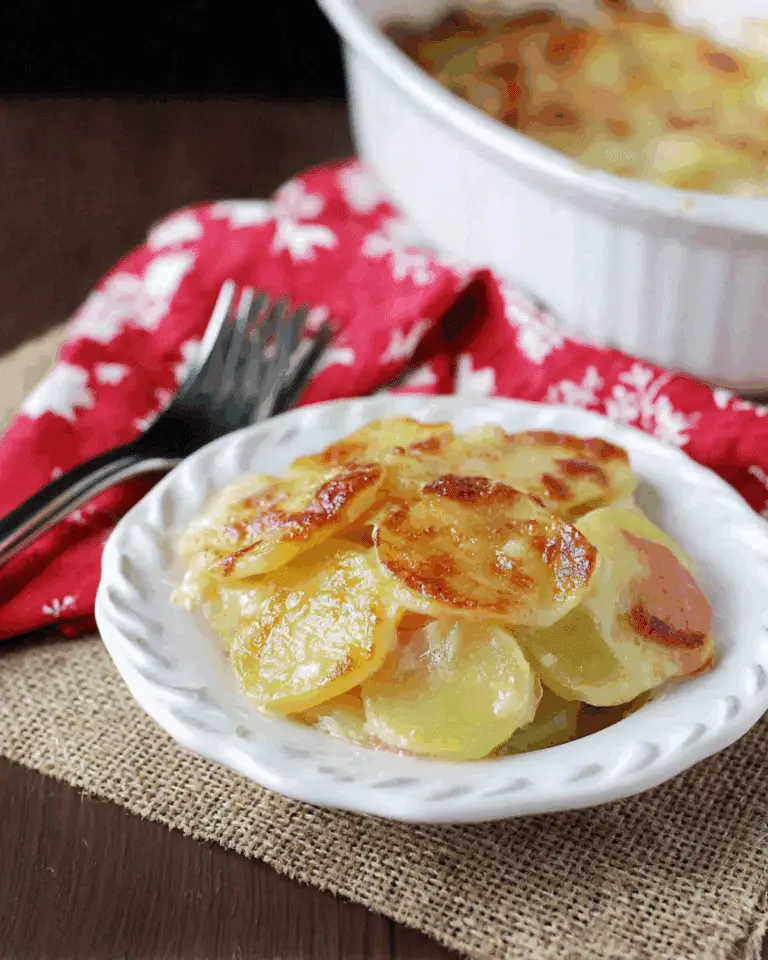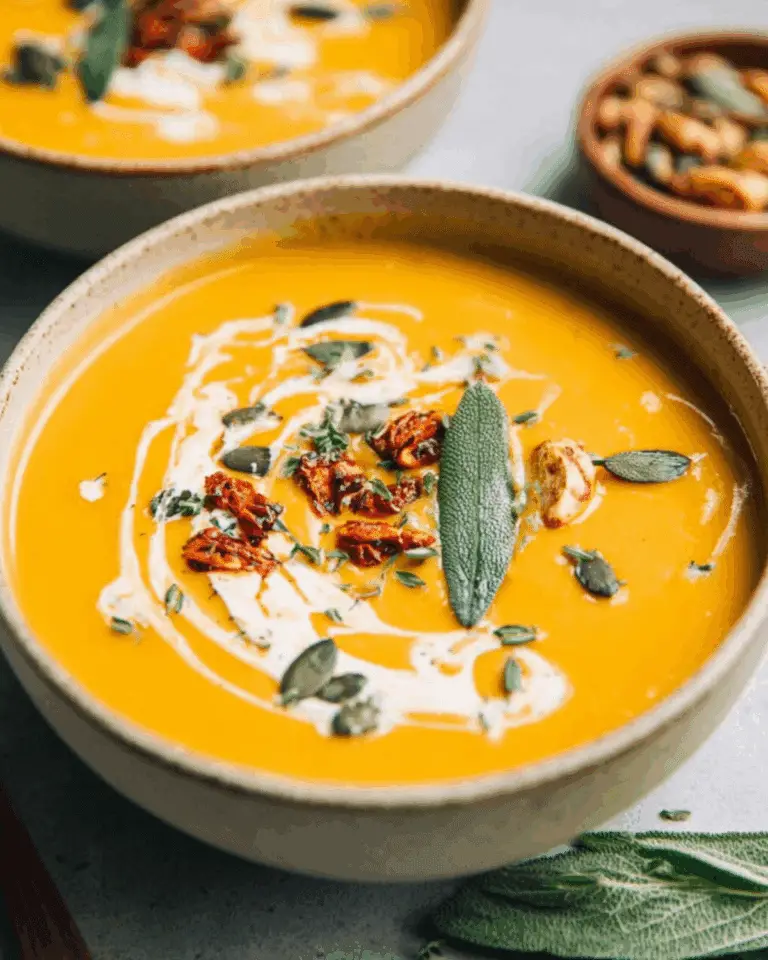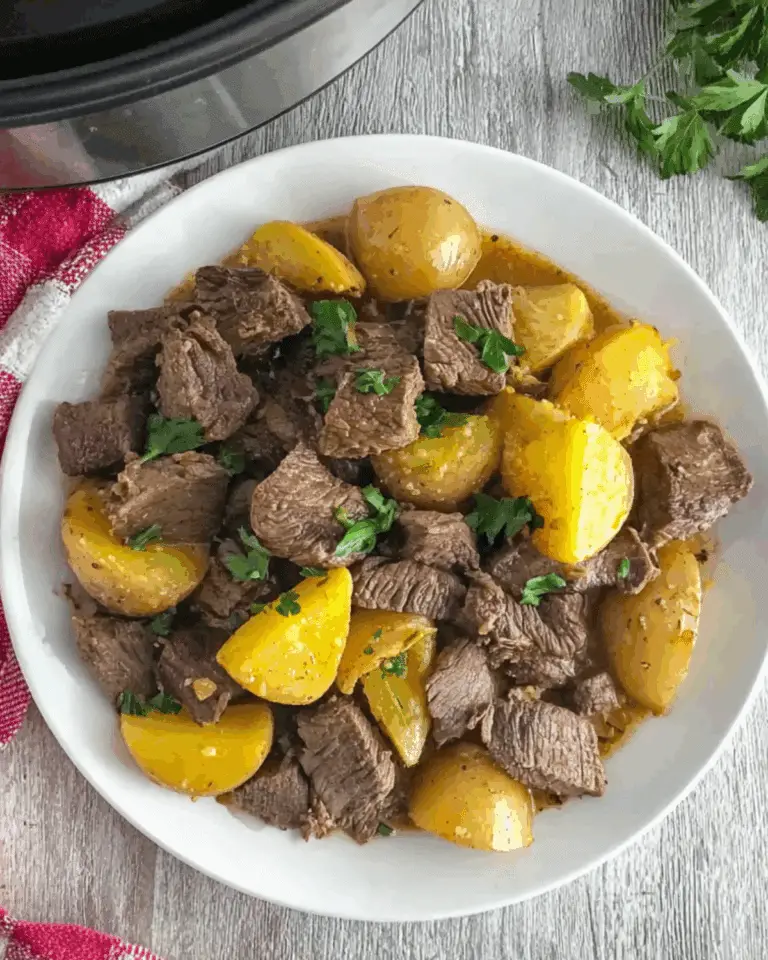If you’re aiming to impress at your next family gathering or holiday dinner, a perfectly cooked roast prime rib is the ultimate showstopper. Rich, tender, and packed with savory flavor, prime rib has long been a go-to centerpiece for festive meals. This guide walks you through everything you need to know—from choosing the right cut to seasoning tips and step-by-step roasting instructions. Whether you’re a first-timer or a seasoned cook looking to master the perfect crust, you’ll find all the insights you need right here. Don’t miss our fresh ham with cracklings if you’re looking for more meaty centerpiece inspiration.
JUMP TO
Table of Contents
Why Roast Prime Rib is a Timeless Holiday Favorite
The History Behind Prime Rib’s Popularity
Prime rib has its roots in traditional British cooking, where the standing rib roast was a staple for grand occasions. In the United States, it became a holiday icon in the 20th century thanks to its luxurious appeal and unmatched flavor. The slow roasting method allows the beef to remain juicy and flavorful—a true indulgence during special seasons.
What Makes Prime Rib So Special for Celebrations
The key to prime rib’s celebratory status lies in its texture and richness. The high fat marbling melts during roasting, basting the meat internally. This results in a succulent cut with bold beef flavor. Its large, bone-in presentation also makes it dramatic and perfect for carving at the table.
Prime Rib vs. Other Cuts: What You’re Really Paying For
Unlike sirloin or brisket, prime rib roast comes from the primal rib section. This part of the cow offers a perfect fat-to-meat ratio, making it tender without needing hours of braising. While pricier, you’re paying for quality and ease—less prep, more wow factor.
How to Choose the Best Cut for Roast Prime Rib
Bone-In vs Boneless Prime Rib: Pros and Cons
Bone-in prime rib, also called standing rib roast, cooks more evenly and offers better flavor due to the insulation from the bone. Boneless versions are easier to carve and slightly faster to cook. If flavor is your priority, stick with the bone-in. Hosting a large group? Consider getting both for variety.
What to Ask Your Butcher (or Look for in Store)
When shopping, ask for USDA Prime grade if available—it has superior marbling. Choice grade is your next best bet. Request your butcher to trim excess fat but leave a nice cap for moisture. If you prefer bone-in, ask for the bones to be partially cut (called “chine bone removal”) to make carving easier after roasting.
Sizing Your Roast: How Much Prime Rib Per Person
A good rule of thumb is:
| Guests | Boneless Roast | Bone-In Roast |
|---|---|---|
| 4–6 | 4–5 lbs | 6 lbs (3 bones) |
| 6–8 | 6–7 lbs | 8 lbs (4 bones) |
| 10+ | 10 lbs+ | 5–7 bones |
Plan on about 1 lb per person if boneless, and 1.25 lbs per person if bone-in to account for bones and trimming.
Ingredients and Tools You’ll Need for Roast Prime Rib
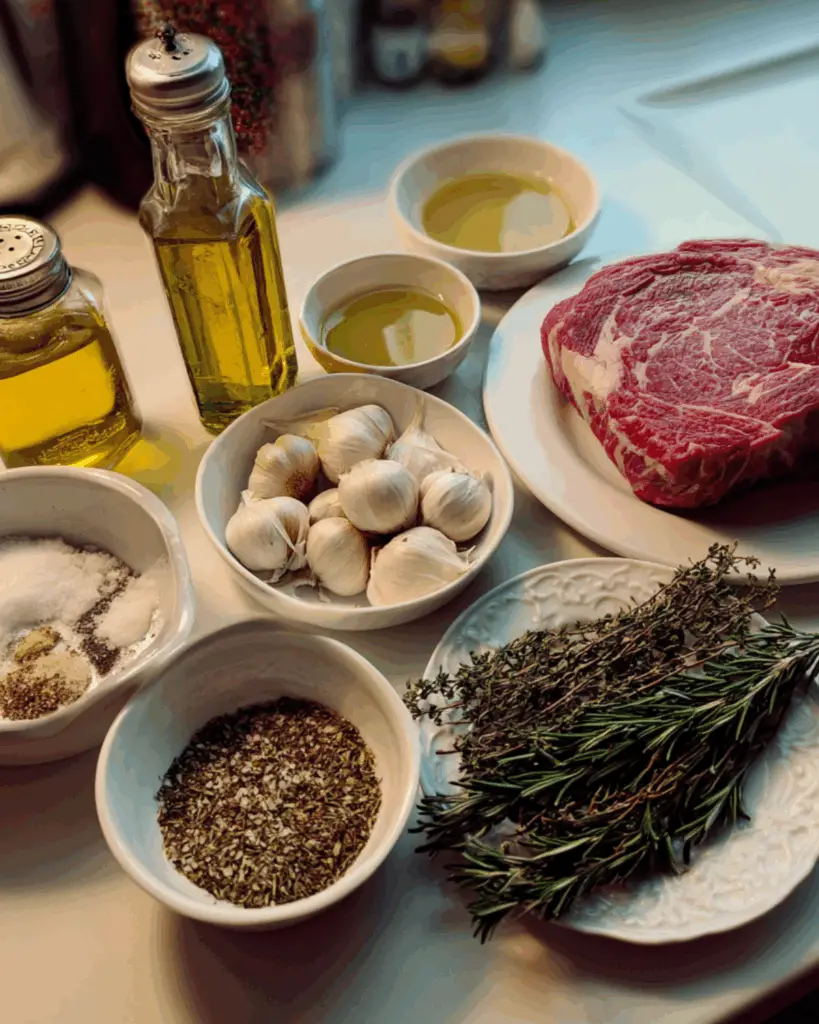
Must-Have Ingredients for Flavorful Results
- 1 standing rib roast (bone-in or boneless)
- Kosher salt and coarse black pepper
- Fresh garlic cloves (minced or crushed)
- Fresh rosemary and thyme
- Olive oil or softened butter
The simplicity of these ingredients allows the beef’s natural richness to shine through. The herb-garlic rub forms a flavorful crust that enhances every bite.
Optional Add-ins to Elevate Your Rib Roast
Consider adding crushed mustard seeds, horseradish, or a splash of red wine to your rub for added depth. Don’t miss our brown sugar glazed ham recipe if you want to balance savory meats with a hint of sweet.
Essential Tools for a Flawless Roast Every Time
- Roasting pan with rack
- Meat thermometer (instant-read or probe)
- Carving knife and fork
- Aluminum foil for resting
- Optional: cast iron skillet for reverse searing
Temperature precision is crucial for getting the ideal doneness. Always use a reliable thermometer—visual guesses lead to overcooked meat.
Step-by-Step Instructions for Cooking Roast Prime Rib
Prepping Your Roast the Right Way
Start by bringing your roast to room temperature—about 2 hours before cooking. Generously coat it with olive oil, herbs, salt, and pepper. Letting the rub sit for a few hours or overnight helps build a flavorful crust.
The Reverse Sear Method Explained
This foolproof method starts low and finishes hot. Roast the prime rib at 225°F until it reaches 120°F for rare, then remove and rest. Meanwhile, crank your oven to 500°F and return the roast for a 10-minute sear. This locks in juices and crisps the crust.
Cooking Time by Weight and Doneness
| Doneness | Internal Temp (Before Resting) | Est. Time @225°F |
|---|---|---|
| Rare | 120°F | 30 min/lb |
| Medium | 130°F | 35 min/lb |
| Well | 140°F+ | 40+ min/lb |
Always rest your roast 20–30 minutes before carving to redistribute juices.
Resting and Carving: Final Tips for Serving
Tent your roast with foil while resting. Use a sharp carving knife to slice against the grain into ½-inch thick pieces. Serve with horseradish cream, au jus, or a rich red wine reduction. For more sides, check out our easy creamy cheesy potato bake and elevate your meal further.
Tips for Getting the Perfect Crust and Juicy Center
The Role of Temperature in Prime Rib Success
Getting your roast prime rib just right comes down to temperature control. Don’t rely on oven dials—use a digital meat thermometer and monitor both the roast’s core and your oven’s actual heat. For the juiciest result, aim to pull the meat out about 5°F before your desired doneness. The internal temp continues rising during the resting phase. This step alone prevents the dreaded overcook.
Marinades vs. Rubs – Which Should You Use?
While marinades can work, they aren’t necessary for a well-marbled cut like prime rib. A herb and garlic rub is all you need to create a robust flavor profile. Rubs also help form the golden, crackling crust everyone craves. Avoid sugary marinades—they can burn at high temps during searing. Want variety in your festive menu? Check out our Christmas baked salmon for a flavorful alternative.
Common Mistakes to Avoid When Roasting Prime Rib
Many first-timers make the mistake of over-seasoning or skipping the rest period. Others slice the roast too soon, letting all the juices escape. Here’s what to avoid:
- Don’t roast straight from the fridge
- Never skip resting
- Avoid searing too early—reverse searing is the way
- Don’t use a dull knife; it shreds the meat
Letting the meat breathe and respecting the process are what make your roast go from good to legendary.
The Best Side Dishes to Serve with Roast Prime Rib
Traditional Holiday Pairings
Classic sides are always a safe bet. Think buttery mashed potatoes, Yorkshire pudding, or creamed spinach. For a Southern twist, consider serving it with cider-braised pot roast on the side or even roasted root veggies.
| Traditional Sides | Description |
|---|---|
| Yorkshire Pudding | Puffed savory pastry with drippings |
| Garlic Mashed Potatoes | Creamy and rich comfort food |
| Creamed Spinach | Velvety texture and deep flavor |
These balance out the richness of prime rib without overpowering it.
Modern Side Dish Ideas to Try
If you want to give your holiday meal a modern flair, go beyond the basics:
- Truffle mac and cheese
- Roasted Brussels sprouts with pancetta
- Garlic herb pull-apart bread
- Wild rice salad with cranberries
Pair these with the rib roast for a gourmet holiday plate that feels both new and nostalgic.
Wine and Sauce Pairings That Work
A rich beef dish deserves a bold pairing. Opt for full-bodied reds like Cabernet Sauvignon or Syrah. If you’re making au jus, try deglazing the roasting pan with red wine or beef stock. Horseradish sauce, blue cheese butter, or a balsamic reduction also work beautifully.
Looking for a vegetarian complement? Try our creamy roasted garlic butternut squash pasta here—it balances the richness of meat with silky, sweet-savory notes.
FAQs About Roast Prime Rib
How long can you keep leftover prime rib?
Store leftovers in an airtight container in the fridge for up to 4 days. Reheat gently in the oven at 275°F to retain moisture. For longer storage, slice and freeze the roast for up to 3 months.
Can you cook a frozen prime rib roast?
It’s not recommended. Cooking from frozen leads to uneven doneness. If you’re in a pinch, thaw the roast slowly in the fridge for 2–3 days before seasoning and roasting.
What’s the difference between ribeye and prime rib?
Both come from the same primal cut, but prime rib is usually roasted whole and served in thick slices, often with the bone. Ribeye steaks are sliced before cooking and typically grilled or pan-seared.
Should you cover prime rib while it cooks?
No—roast it uncovered. Covering traps moisture and steams the meat, which prevents that flavorful crust from forming. Use a roasting rack to elevate the meat and allow airflow around it.
Final Thoughts on Making the Best Roast Prime Rib
Is It Worth the Price? Absolutely—If Cooked Right
A roast prime rib isn’t just dinner—it’s an experience. Yes, the cut is expensive, but its melt-in-your-mouth texture, deep beefy flavor, and striking presentation make it worth every penny when done right. A beautifully cooked roast can anchor any celebration, from Christmas to birthdays or even Sunday supper with the family.
Mastering this recipe gives you a foolproof showstopper dish that everyone will remember. And the best part? Once you learn the method, it becomes surprisingly simple to repeat. Want more holiday hits? Discover great ideas like our brown sugar glazed ham to round out your festive menu.
Make It Once, Master It Forever
You don’t have to be a chef to make prime rib. Just follow the steps, use a thermometer, and respect the rest time. Every time you cook it, you’ll get better, more confident, and more creative with pairings and plating. Prime rib may look fancy—but now, you know the secret: it’s totally doable.
Looking for inspiration? Try our creamy roasted garlic butternut squash pasta as a hearty side to round out your table. From prep to plating, the perfect roast is only a few steps away.
PrintRoast Prime Rib
A perfectly seasoned and slow-roasted prime rib recipe that’s juicy, tender, and ideal for holidays or special occasions. This step-by-step guide helps you master the reverse sear method for a flawless roast every time.
- Prep Time: 2 hours
- Cook Time: 2.5 to 3.5 hours
- Total Time: 5 to 6 hours
- Yield: 6–10 servings
- Category: Main Course
- Method: Roasting
- Cuisine: American
- Diet: Halal
Ingredients
- 1 standing rib roast (bone-in or boneless, 6–10 lbs)
- 2 tablespoons kosher salt
- 2 tablespoons coarse black pepper
- 6 cloves garlic, minced
- 2 tablespoons fresh rosemary, chopped
- 2 tablespoons fresh thyme, chopped
- 2 tablespoons olive oil or softened butter
Instructions
- Bring the prime rib to room temperature by letting it sit out for 2 hours before roasting.
- Preheat the oven to 225°F (107°C).
- In a bowl, combine olive oil or butter, minced garlic, chopped rosemary, thyme, salt, and pepper.
- Rub the mixture generously over the entire roast.
- Place the roast bone-side down in a roasting pan fitted with a rack.
- Roast until internal temperature reaches 120°F for rare, 130°F for medium (about 30-35 minutes per pound).
- Remove from oven and tent with foil. Let rest for 20–30 minutes.
- Increase oven temp to 500°F and return the roast for 8–10 minutes to sear the outside and create a crust.
- Remove from oven, rest 10 more minutes, carve and serve.
Notes
- Use a meat thermometer for best accuracy.
- Resting time is crucial to keep the roast juicy.
- You can prepare the garlic-herb rub a day in advance.
- Leftovers can be stored up to 4 days in the fridge.
- Perfectly pairs with horseradish sauce or red wine jus.
Nutrition
- Serving Size: 8 oz
- Calories: 580
- Sugar: 0g
- Sodium: 420mg
- Fat: 45g
- Saturated Fat: 18g
- Unsaturated Fat: 24g
- Trans Fat: 1g
- Carbohydrates: 1g
- Fiber: 0g
- Protein: 42g
- Cholesterol: 140mg

